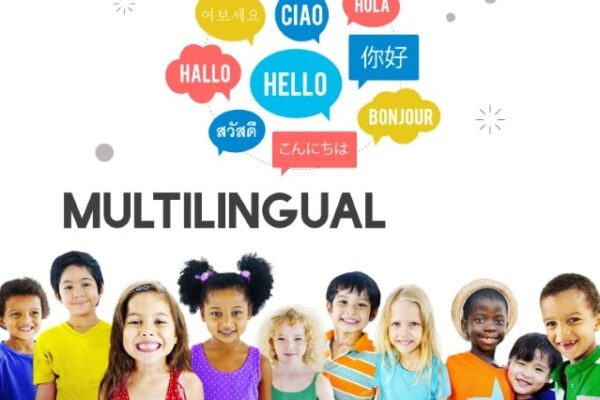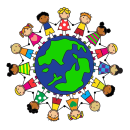Multilingual Parenting Tips: Creating a Language-Rich Home Environment
In our globalized world, the ability to navigate multiple languages is a valuable skill that fosters cultural understanding and opens doors to diverse perspectives. For parents raising children in a multilingual household, the journey of nurturing language skills from an early age can be both rewarding and enriching. In this article, we’ll explore practical tips for creating a language-rich home environment that supports multilingual parenting, along with a curated list of resources to enhance the experience.
Practical Tips for Multilingual Parenting:
1. Start Early:
Begin exposing your child to multiple languages from a young age. Babies and young children possess a remarkable capacity for language acquisition, and early exposure lays a strong foundation for multilingualism.
2. Consistency is Key:
Consistency in language use is crucial. Designate specific times or situations for each language to avoid confusion, such as using one language at home and another outside or with specific family members.
3. Create Language Zones:
Designate specific areas in your home for each language. This could be as simple as assigning a language to certain rooms or creating language-specific corners with books and toys.
4. Use Multilingual Resources:
Invest in books, games, and educational materials in each language. This not only reinforces language learning but also introduces cultural elements tied to each language.
5. Multilingual Media Consumption:
Explore multilingual media options, including cartoons, movies, and music. This exposes your child to different accents, dialects, and cultural nuances associated with each language.
6. Celebrate Cultural Holidays:
Incorporate celebrations of cultural holidays associated with each language. This provides context for language use and instills a sense of pride in your child’s cultural heritage.
7. Language Playtime:
Engage in language-focused playtime activities. Incorporate language into games, puzzles, and arts and crafts. This makes learning languages a fun and interactive experience.
8. Encourage Communication:
Create an environment where your child feels comfortable communicating in all languages. Encourage them to express themselves in the language they feel most at ease with.
9. Multilingual Social Connections:
Encourage friendships and connections with others who speak the languages you are fostering at home. Playdates and social interactions can provide additional exposure and motivation.
10. Be Patient and Flexible:
Language development varies for each child. Be patient and allow your child to progress at their own pace. Additionally, be flexible in adapting your language strategies as your child grows and develops.
Resources for Creating a Multilingual Home Environment:
1. Multilingual Books and Literature:
- Visit your local library for assistance in finding multilingual children’s books. Mel.org is a great resource for finding books in other languages.
- Explore online platforms like Amazon, Book Depository, or multicultural bookstores for a diverse selection.
2. Educational Apps and Websites:
- Utilize educational apps such as Duolingo, Babbel, or Lingodeer Kids for interactive language learning.
- Explore websites like BBC Languages, FluentU, or Little Pim for language learning resources tailored for children.
3. Language Learning Games:
- Find board games, card games, and puzzles designed for language acquisition.
- Check out websites like Multilingual Living and Linguacious for language games and resources.
4. Multilingual Toys and Flashcards:
- Invest in multilingual educational toys from companies like Melissa & Doug.
- Explore online marketplaces or educational toy stores for language-specific games and toys.
5. Cultural Events and Festivals:
- Attend cultural events, festivals, or language immersion programs in your community for exposure to native speakers.
- Look for events organized by local community centers or cultural organizations celebrating different languages.
6. Language Learning DVDs and Videos:
- Discover educational DVDs or online video platforms offering language learning content for children.
- Change TV settings so that the audio and/or captions of movies and TV shows increase exposure to the target language.
- Explore multilingual content on YouTube channels like Super Simple Songs, Canticos, or Little Baby Bum.
7. Online Language Courses:
- Enroll your child in online language courses designed for children, available on websites like Rosetta Stone, Little Pim, or Dino Lingo.
- Check with local language schools that may offer online courses for kids.
8. Language Learning Podcasts:
- Explore language learning podcasts tailored for children, such as “Little Stories for Tiny People” or “The MamaLingua Podcast.”
9. Language-Specific Websites:
- Visit websites dedicated to specific languages, like Spanish Playground or Rockalingua, for songs, games, and printable activities.
10. Local Language Classes and Meetups:
- Check for local language classes or meetups for families with similar multilingual goals using platforms like Meetup.com.
Remember to adapt these resources to suit your family’s preferences and the languages you are focusing on. Creating a multilingual environment is a dynamic and personalized process, and these resources can provide valuable support along the way. Embrace the journey of multilingual parenting, and watch as your child flourishes in a world rich with language and cultural diversity.


